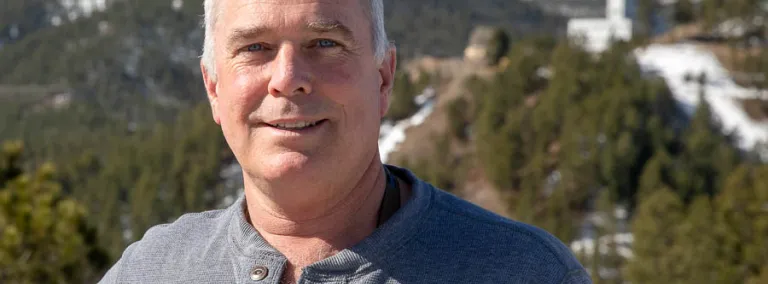Back where he started
Todd Hubbard comes full circle as mechanical engineer at Sanford Lab.
Todd Hubbard’s career as a mechanical engineer spans nearly three decades, all in mining. He began his first job in the field in January 1991, immediately upon graduating from the South Dakota School of Mines & Technology (SD Mines), at the Homestake Mine. Recently, he took on the role of senior mechanical engineer at the Sanford Underground Research Facility, where he will oversee major engineering projects, including several for the Ross Shaft and Headframe.
“Todd is a welcome addition to the Engineering Department,” said Allan Stratman, director of engineering at Sanford Lab. “He brings a wealth of mechanical engineering experience to the SDSTA team. As a former Homestake employee, he understands the infrastructure and the strong work ethic and culture that is woven into the SDSTA organization. He’s also worked at different mines and facilities around the world, so he brings those outside perspectives and experiences to the organization; a great blend.”
Hubbard will replace senior mechanical engineer Mike Johnson, who will retire later this year. “The overlap will be needed as we try to transfer just a small portion of the knowledge and experience Mike has gained during his time at Homestake and Sanford Lab,” Stratman said.
For more than 25 years, Hubbard worked at Homestake, visiting every level from the 1100 Level all the way down the deepest part of the mine: the 6-Shaft sump, which housed the deepest pump at 8,250 feet below the surface.
“Working at Homestake was tough and dirty,” Hubbard said. “But we all knew we were in it together, so we worked hard together. It was like family—an extraordinary family.”
From Homestake, Hubbard and his wife, Connie, moved to West Papua, Indonesia, where he worked for a copper and gold mining operation. Hubbard found he enjoyed his time there and learning about the culture. (An interesting note, is that Indonesia is just 75 years old as a country, 50 years younger than Homestake when it closed in 2001.)
“Indonesia was different from the Black Hills, but it was great,” Hubbard said. “We were at higher altitudes—anywhere from 6500 to 14000 feet up—and in a mountainous jungle where it rained every day.” The humidity was extraordinarily high, especially when compared to the Black Hills. No surprise there, the average rainfall was 200 inches per year.
When Hubbard accepted the job in West Papua, he did so with the understanding that it would be the last job he would ever have. “A buddy of mine told me I’d never have to worry, the company was solid and would be around for years.” Yet, just seven months later, Hubbard was out of a job, brought on by changes made to agreements made between the government and corporations.
The company, which employed around 32,000 people, shut down. On the first day of closure, Hubbard watched as 8,000 local employees were driven down the mountain in buses—and into an uncertain future.
Hubbard and other foreign nationals were given just three days to vacate the island. He and Connie returned to their home in Spearfish where she began teaching in Gillette, Wyoming, and he became an independent mining consultant, at least until he was offered this position at Sanford Lab.
And he’s quite happy to be back in the Black Hills working at a place that was such a big part of s life for so many years.
“It’s been repurposed for a new life and I’m glad to be a part of it,” he said.
